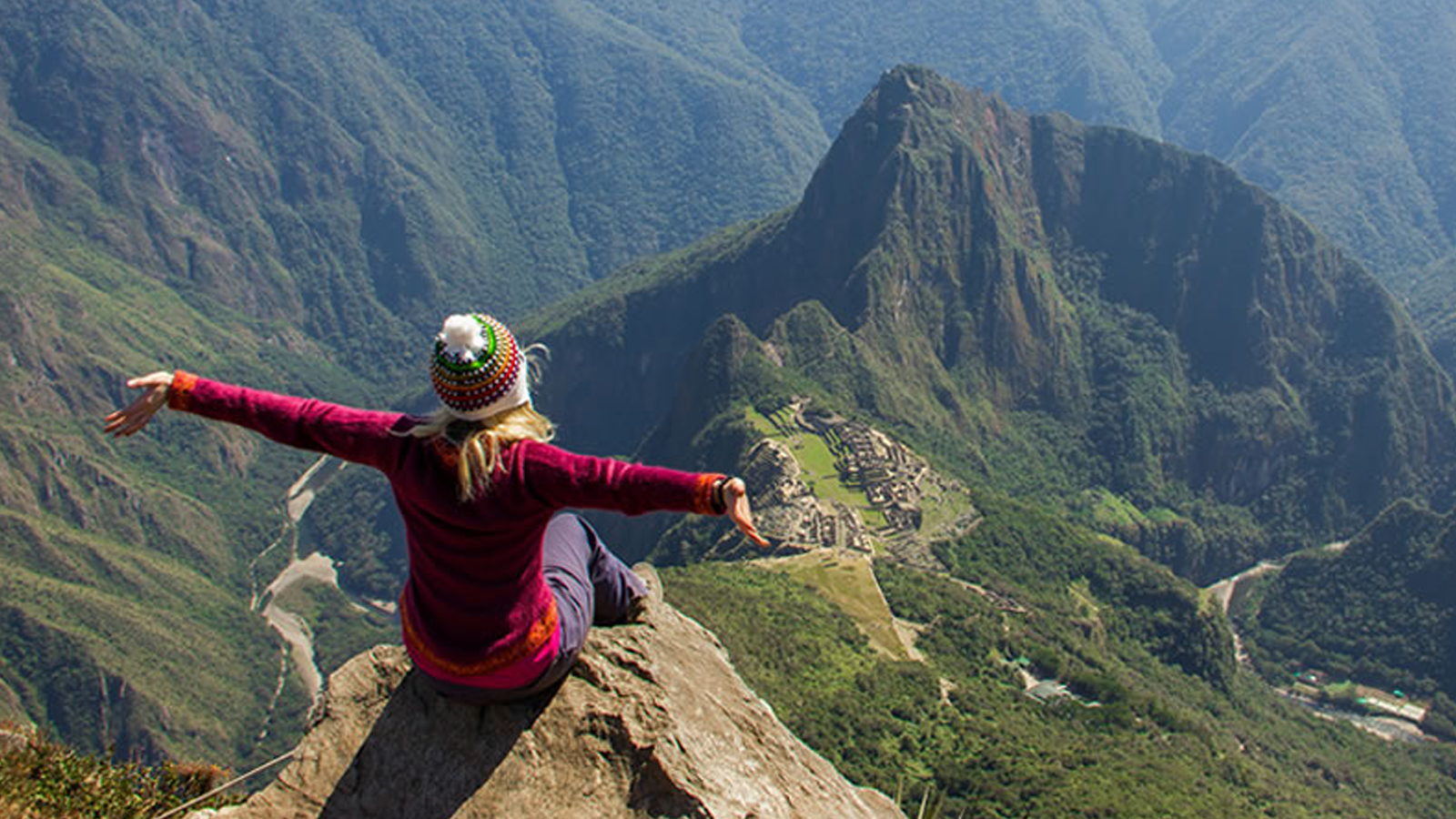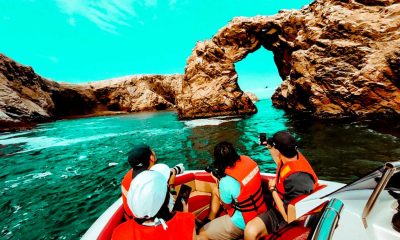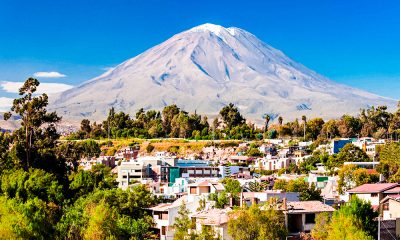Viajes
Machu Picchu: The ultimate guide to the circuits and attractions you can visit
Publicado
el

Do you want to explore the world’s most famous Inca citadel? If you’ve already investigated how to purchase tickets to Machu Picchu, you’re probably wondering which of the available routes is best for you.
To help you organize this adventure and make the most of your visit, we’ve put together a full guide with the circuits (1, 2, 3, and 4) and attractions (Inca Bridge and Mountains Machu Picchu, Waynapicchu, and Huchuypicchu) that you can choose when purchasing your entrance tickets:
1.- Circuits in Machu Picchu
Circuit 1
This tour is ideal for seniors or those who want to enjoy a panoramic view of Machu Picchu without spending too much time. You’ll have the opportunity to explore more than half of the Inca Citadel, including the terraces and platforms area.
- Plataforma inferior
- Plataforma superior
- Foso Seco
- Mirador del Templo del Sol
- Caos Granítico
- Conjunto Espejos de Agua
- Plaza del Pisonay
- Reserva Arqueológica
Approximate duration: 2:00 hours

Circuit 2
This trail is one of the most complete, because it allows you to explore a large part of the citadel. It covers the upper and lower parts of the archaeological site, allowing you to enjoy a variety of attractions and capture the iconic postcard photo with Machu Picchu in the background.
- Plataforma inferior
- Plataforma superior
- Foso Seco
- Mirador del Templo del Sol
- Caos Granítico
- Plaza de los Templos
- Pirámide del Intiwatana (Abierto de 07:00 a 10:00 horas)
- Roca Sagrada
- Doce Vanos
- Qolqas Orientales
- Conjunto Espejos de Agua
- Templo del Cóndor (10:00 a 13:00 horas)
- Plaza del Pisonay
- Reserva Arqueológica
Approximate duration: 3:00 hours

Circuit 3
This is the shortest route and allows you to visit the lower part of Machu Picchu. Keep in mind that this circuit does not include access to the Guardian’s House, where you can get the classic photo with the Inca citadel in the back.
- Qolqas
- Zona Agrícola
- Canal de Agua
- Foso Seco
- Conjunto Templo del Sol
- Conjunto Casa del Inka
- Fuentes de Agua
- Conjunto Espejos de Agua
- Plaza del Pisonay
- Reserva Arqueológica
Approximate duration: 1:30 hours

Circuit 4
This route starts in the lower part, known as the urban sector, and takes you through the main temples and much of Machu Picchu, up to the entrance gate of the Huayna Picchu and Huchuypicchu Mountains.
- Qolqas
- Zona Agrícola
- Canal de Agua
- Foso Seco
- Conjunto Templo del Sol
- Conjunto Casa del Inka
- Fuentes de Agua
- Roca Sagrada
- Doce Vanos
- Qolqas Orientales
- Conjunto Espejos de Agua
- Templo del Cóndor (10:00 a 13:00 horas)
- Plaza del Pisonay
- Reserva Arqueológica
Approximate duration: 2:30 hours

What is the most recommended Machu Picchu circuit?
If you’re visiting the citadel for the first time, the best option is to take Circuit 2, which you can access with the tickets Machu Picchu Llaqta (Circuit 1 or 2) or Circuit 1 or 2 + the Inca Bridge. This route is considered the most complete, covering most of the citadel.
If you want to get the dream photograph with Machu Picchu in the background from an excellent angle, the ideal options are Circuit 1 and Circuit 2 since their routes include the point known as Casa del Guardian, offering a privileged panoramic view from the high part of the enclosure.

2.- Other attractions in Machu Picchu
Machu Picchu Mountain
This is one of the three mountains in Machu Picchu, the highest in the area at an altitude of 3,082 meters above sea level. It is located south of the citadel and is known as the ‘Old Mountain’.
The hike to the top is an adventure for the whole family. The trail is two kilometers long and takes approximately two hours. The way is wide and has stairs, making it more accessible and safer to traverse.
Along the way, you can delight with the abundant vegetation that characterizes the area, highlighting wild orchids. And just halfway through the route, you’ll have the opportunity to enjoy breathtaking panoramic views of the Inca City and Huayna Picchu Mountain.

Waynapicchu Mountain
This summit, known as the ‘Young mountain’ in Quechua, is one of the most popular attractions in Machu Picchu. It is located at 2,693 meters above sea level and offers impressive views of the Inca citadel.
The ascent is an adventure. The path is steep and narrow, with sections of stairs carved into the living rock and cables to help visitors maintain balance. The climb takes between 45 and 60 minutes, depending on the physical condition of each person.
The mountain also houses some Inca archaeological remains. One of the most famous is Templo de la Luna, also known as Gran Caverna (Great Cave), which is built inside a natural cave and houses walls lined with finely crafted blocks.

Huchuypicchu Mountain
Huchuypicchu, which means ‘Small mountain’ in Quechua, is a summit located next to the famous Waynapicchu Mountain. Its altitude reaches 2,497 meters above sea level, making it a challenging but accessible hike for most travelers.
To get there, you must first cross the Machu Picchu citadel following Circuit 4. During the journey, you can admire the most important temples, such as the Temple of the Sun, the Royal House, or the House of the Inca. Once you reach the checkpoint, you will begin the ascent.
The trail features stone paths and classic Inca architecture stairs but is well-maintained and easy to follow. The hike to the top is only one kilometer and takes about an hour, considering breaks to avoid fatigue.
Upon reaching the top, the reward is incredible. From there, you’ll have a spectacular view of everything surrounding Machu Picchu. You’ll see the valley formed by the Vilcanota River, as well as the lush vegetation of the high jungle.

Inca Bridge
This structure is located to west of the citadel, approximately one kilometer from the sector known as La Casa del Guardián (The Guardian’s House). To get there, you must take a short walk of about 20 minutes. Along the way, you’ll cross several paths, some very narrow.
The bridge is made of thick wooden logs, about five meters long, supported by two stone walls. Below it is a precipice with a height of 20 meters. In addition to serving as a communication route, the Inca Bridge is also believed to have served as a defensive tool. If the Incas removed the logs, the passage became inaccessible, preventing the advance of any potential enemy.
Building bridges in the mountains was crucial for the Incas, as the geography of the area made passage very difficult. Today, due to the deterioration of the structure, crossing it is prohibited. However, the walk there is an unforgettable experience.

👉 You can find this guide in Spanish by clicking on this link.
Comentarios
Te puede gustar
-


¿Sale viajecito? 5 destinos increíbles para cerrar el 2025 como se debe
-


¿Cómo ver y emitir tus entradas para un evento en Joinnus?
-


¿Por qué todos están viajando a Arequipa?
-


¡Renueva energías! Los mejores lugares para salir de paseo en familia
-


¿Te vas de roadtrip? Estas playlists serán la compañía perfecta para tu viaje
-


Día Internacional del Guía de Turismo: ¡Celebra con estas escapadas de fin de semana!

Quiz: ¿Eres compatible con tu artista favorito? ¡Descúbrelo!

Joinnus Organizadores: Los 9 conciertos más TOP de Joinnus en el 2025

Socio PaSCión 2026: Todo lo que debes saber sobre el abono de Sporting Cristal

Bad Bunny en Perú: ¡Encuentra aquí el posible setlist del DeBí TiRaR MáS FOtoS World Tour!

FUTTTURA World Tour: Fechas, países y todo sobre la nueva gira de TINI

Verano 2026: Planes imperdibles para salir de la rutina y disfrutar al máximo | Vol. 1

Critics Choice Awards 2026: ¡Descubre aquí la lista completa de ganadores!




